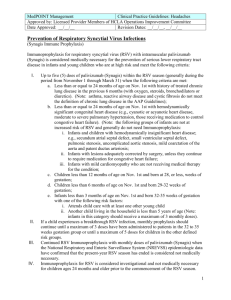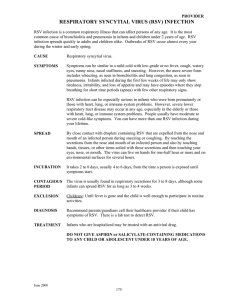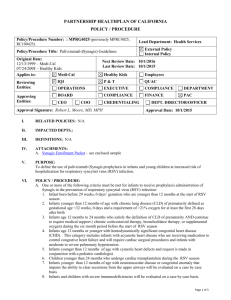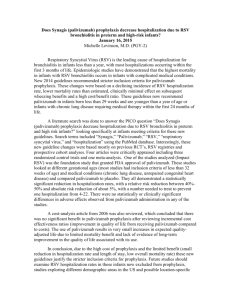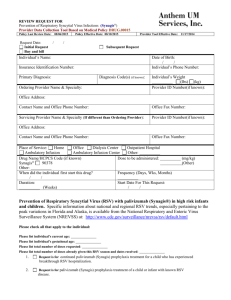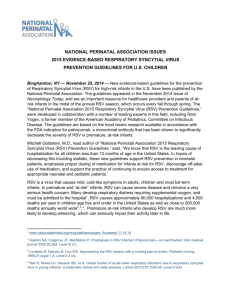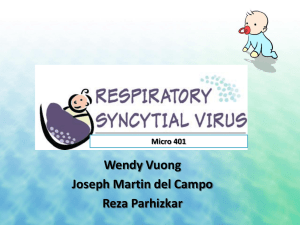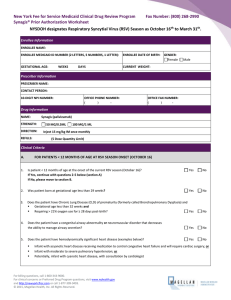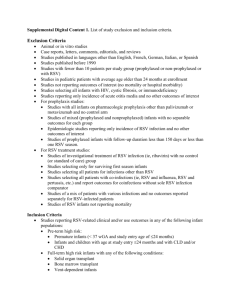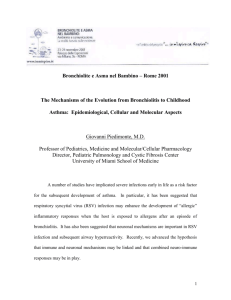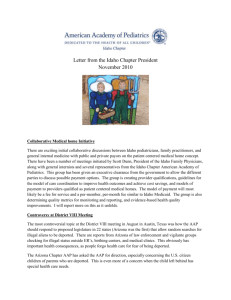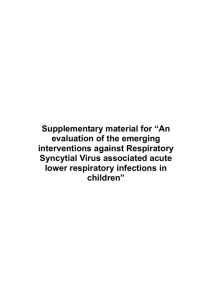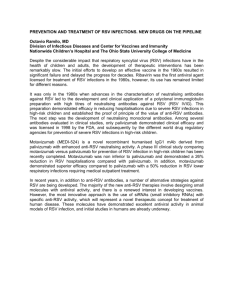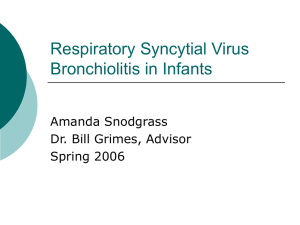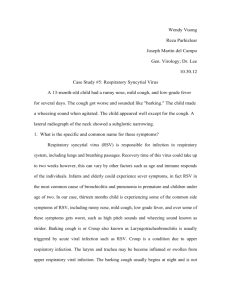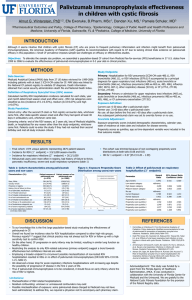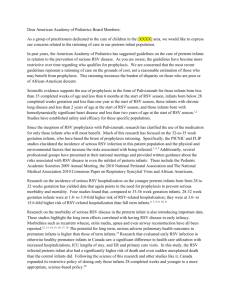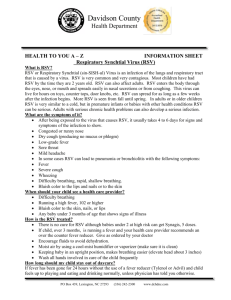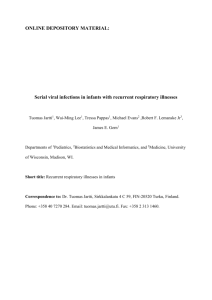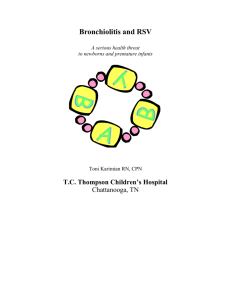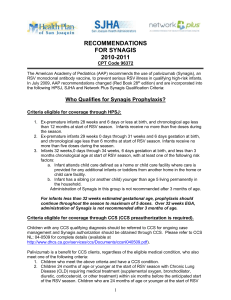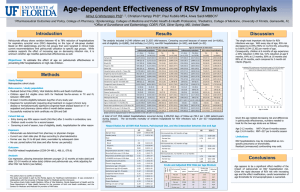Prevention of Respiratory Syncytial Virus Infections
advertisement
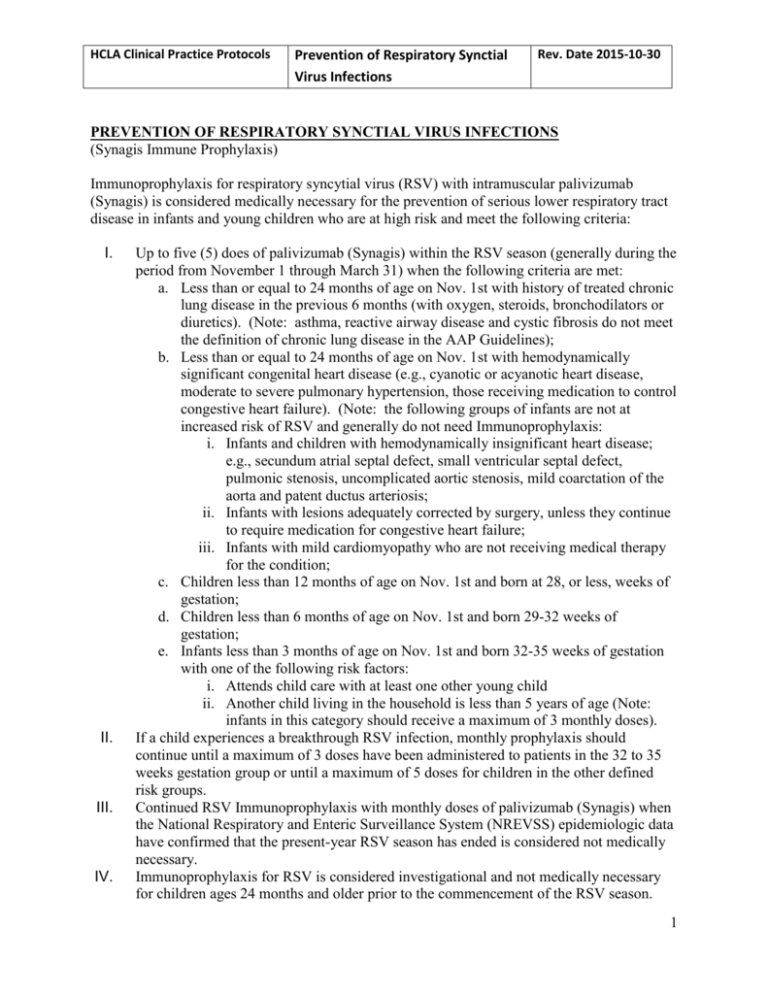
HCLA Clinical Practice Protocols Prevention of Respiratory Synctial Virus Infections Rev. Date 2015-10-30 PREVENTION OF RESPIRATORY SYNCTIAL VIRUS INFECTIONS (Synagis Immune Prophylaxis) Immunoprophylaxis for respiratory syncytial virus (RSV) with intramuscular palivizumab (Synagis) is considered medically necessary for the prevention of serious lower respiratory tract disease in infants and young children who are at high risk and meet the following criteria: I. II. III. IV. Up to five (5) does of palivizumab (Synagis) within the RSV season (generally during the period from November 1 through March 31) when the following criteria are met: a. Less than or equal to 24 months of age on Nov. 1st with history of treated chronic lung disease in the previous 6 months (with oxygen, steroids, bronchodilators or diuretics). (Note: asthma, reactive airway disease and cystic fibrosis do not meet the definition of chronic lung disease in the AAP Guidelines); b. Less than or equal to 24 months of age on Nov. 1st with hemodynamically significant congenital heart disease (e.g., cyanotic or acyanotic heart disease, moderate to severe pulmonary hypertension, those receiving medication to control congestive heart failure). (Note: the following groups of infants are not at increased risk of RSV and generally do not need Immunoprophylaxis: i. Infants and children with hemodynamically insignificant heart disease; e.g., secundum atrial septal defect, small ventricular septal defect, pulmonic stenosis, uncomplicated aortic stenosis, mild coarctation of the aorta and patent ductus arteriosis; ii. Infants with lesions adequately corrected by surgery, unless they continue to require medication for congestive heart failure; iii. Infants with mild cardiomyopathy who are not receiving medical therapy for the condition; c. Children less than 12 months of age on Nov. 1st and born at 28, or less, weeks of gestation; d. Children less than 6 months of age on Nov. 1st and born 29-32 weeks of gestation; e. Infants less than 3 months of age on Nov. 1st and born 32-35 weeks of gestation with one of the following risk factors: i. Attends child care with at least one other young child ii. Another child living in the household is less than 5 years of age (Note: infants in this category should receive a maximum of 3 monthly doses). If a child experiences a breakthrough RSV infection, monthly prophylaxis should continue until a maximum of 3 doses have been administered to patients in the 32 to 35 weeks gestation group or until a maximum of 5 doses for children in the other defined risk groups. Continued RSV Immunoprophylaxis with monthly doses of palivizumab (Synagis) when the National Respiratory and Enteric Surveillance System (NREVSS) epidemiologic data have confirmed that the present-year RSV season has ended is considered not medically necessary. Immunoprophylaxis for RSV is considered investigational and not medically necessary for children ages 24 months and older prior to the commencement of the RSV season. 1 HCLA Clinical Practice Protocols Prevention of Respiratory Synctial Virus Infections Rev. Date 2015-10-30 References: American Academy of Pediatrics (AAP), 2009 Red Book Online, Section 3: Summaries of Infect. Diseases. Chapter on Respiratory Syncytial Virus (RSV). Report of the Committee on Infectious Diseases. Elk Grove Village, IL: AAP; 2009. Anthem Blue Cross Medical Policy, “Prevention of Respiratory Syncytial Virus Infections”, policy #DRUG.00015, 8/19/2010. California Department of Health Care Services letter to All County California Children Services (CCS) Program Administrators, Medical Consultants, and Staff Children’s Medical Services (CMS) Branch Staff, Subject: Palivizumab (Synagis), Aug. 31, 2009. Inland Empire Health Plan, Letter to IPA Medical Directors, “2010-2011 Synagis (palivizumab) Criteria”, Oct. 14, 2010. 2
